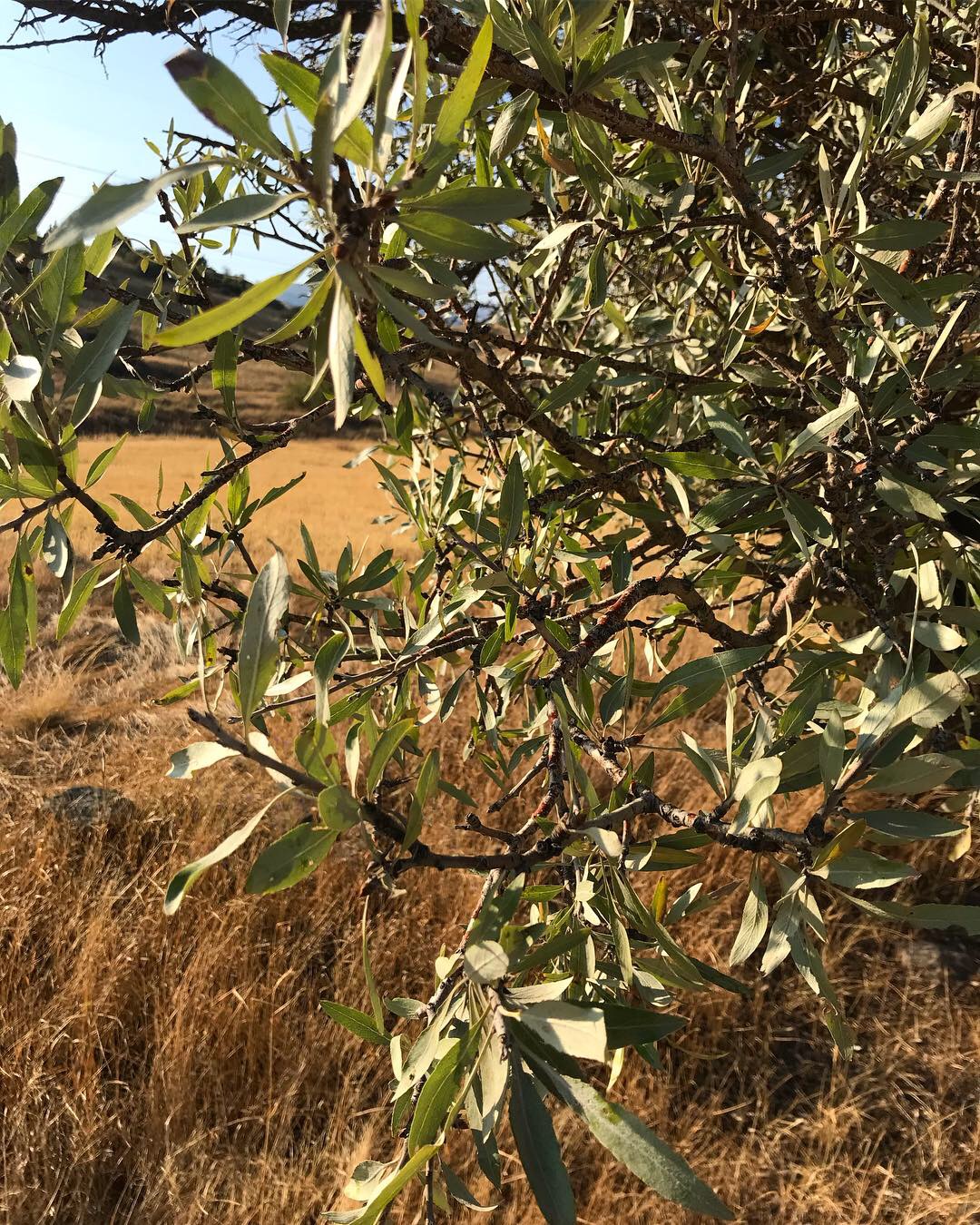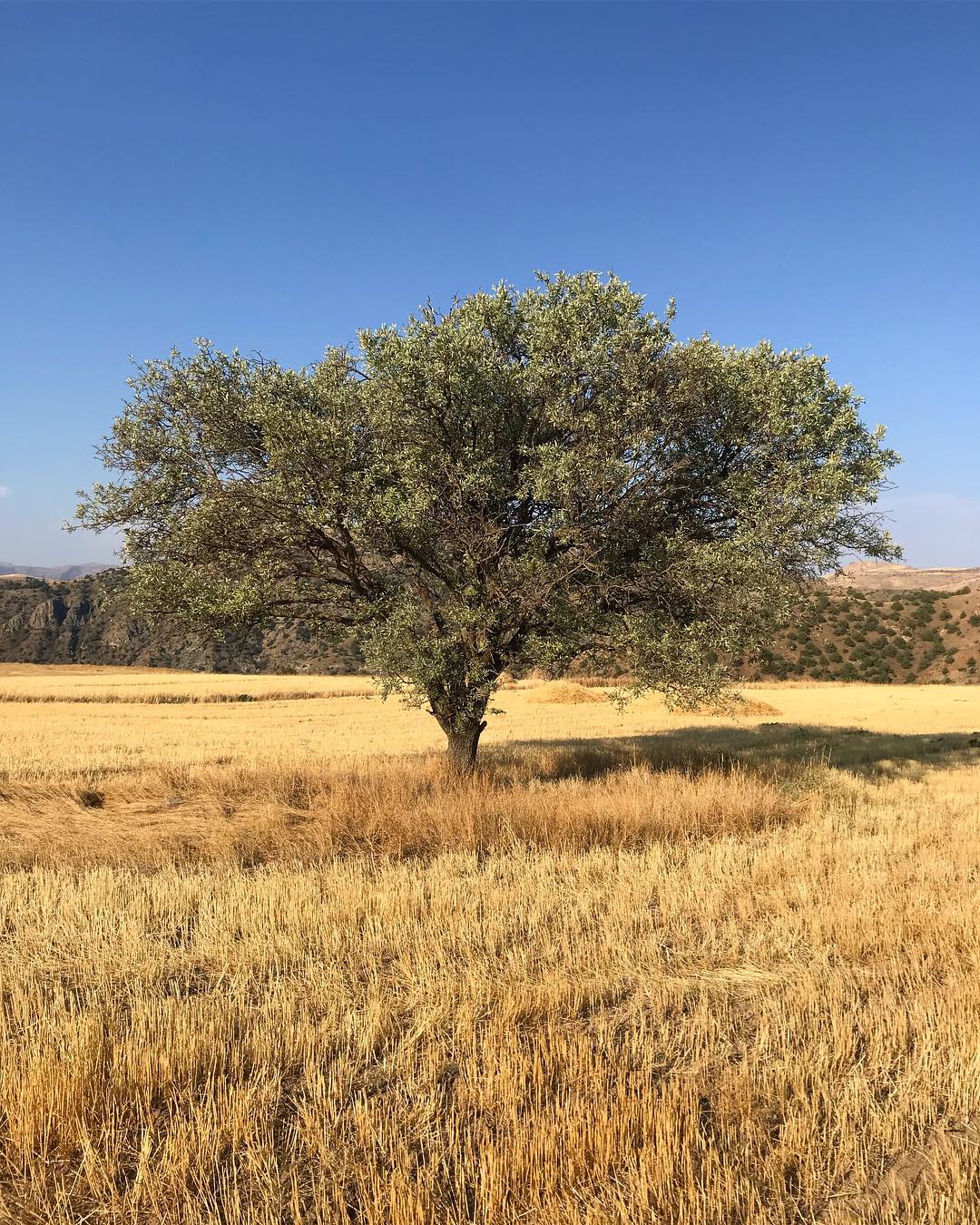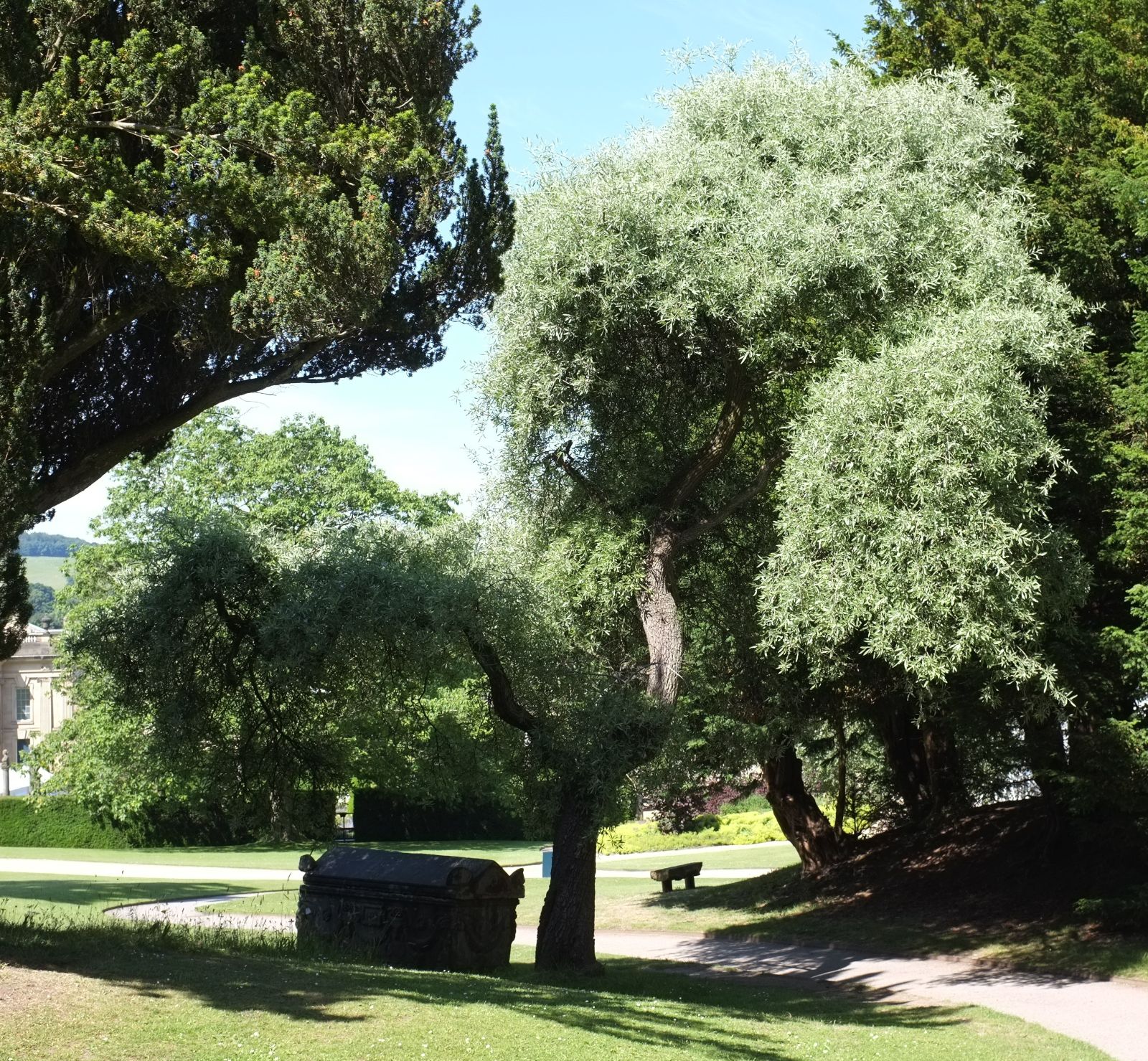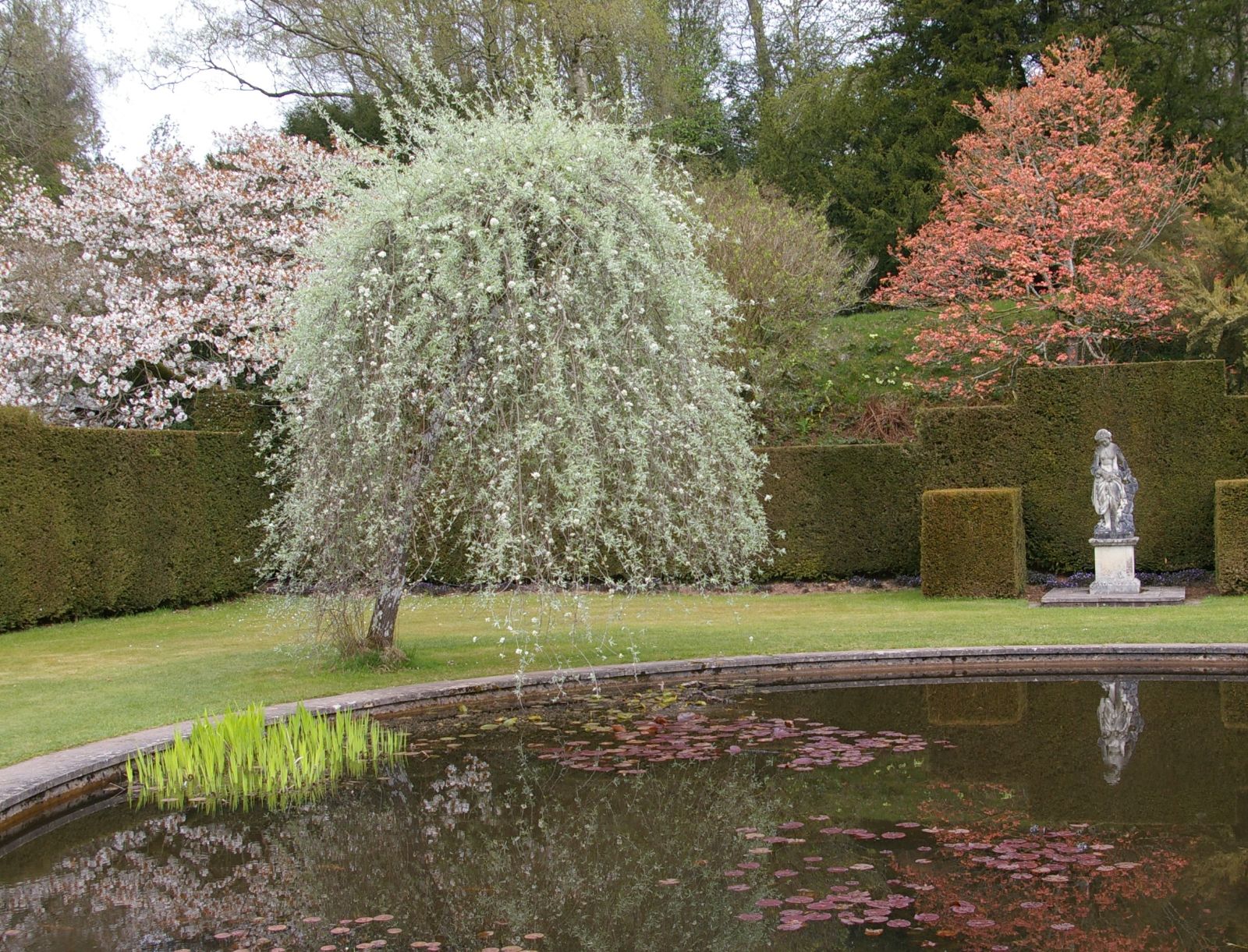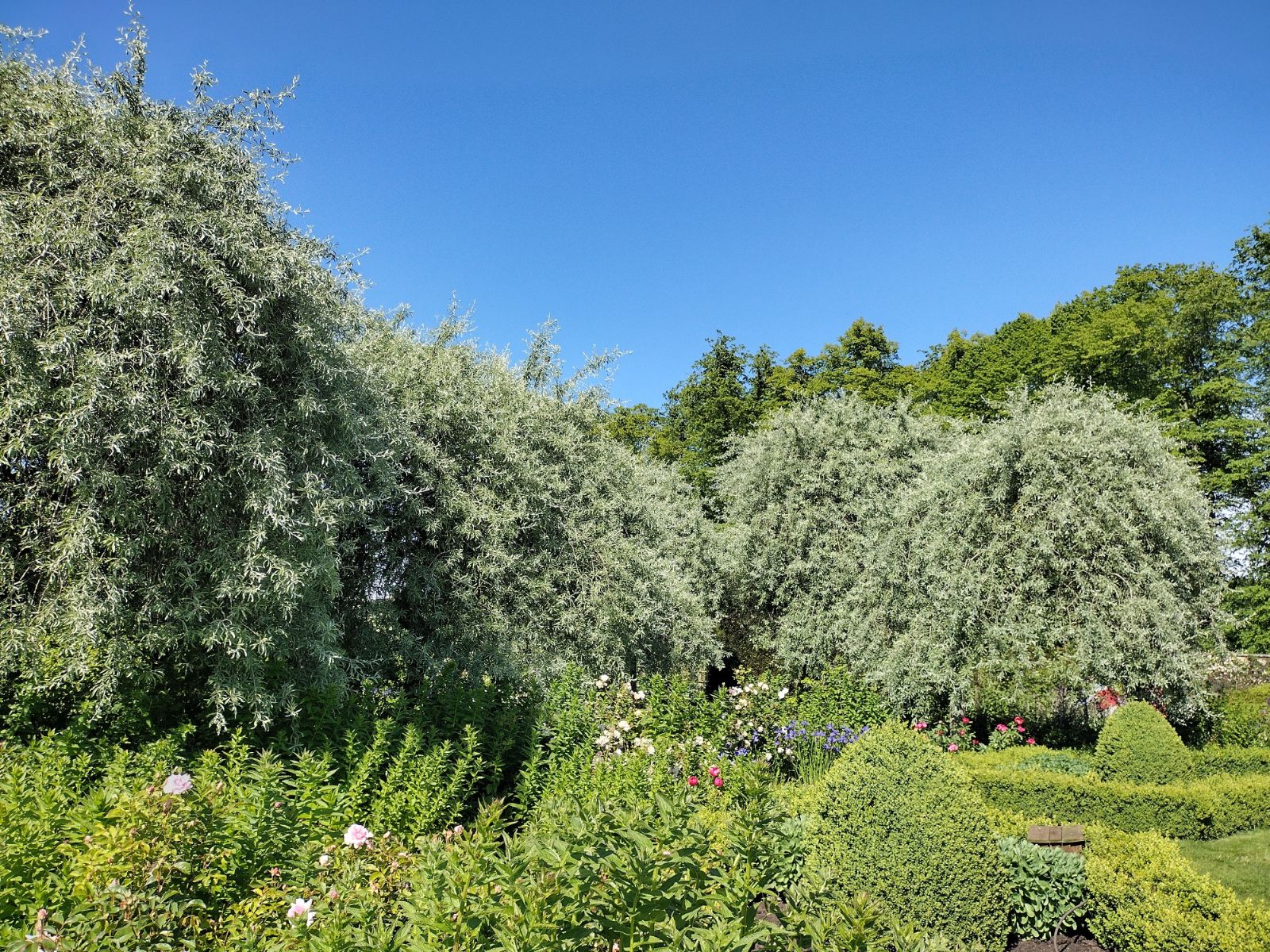Pyrus salicifolia
Credits
Article from Bean's Trees and Shrubs Hardy in the British Isles
Recommended citation
'Pyrus salicifolia' from the website Trees and Shrubs Online (treesandshrubsonline.
Genus
Common Names
- Wlllow-leaved Pear
Infraspecifics
A tree 15 to 25 ft high with a spreading crown, the main branches more or less horizontal, the young branchlets elongated and more or less pendulous; branchlets and buds covered when young with a white, silky down. Leaves 11⁄2 to 31⁄2 in. long, 1⁄3 to 2⁄3 in. wide, narrowly lanceolate, tapering gradually towards both ends, covered when young on both sides with a beautiful silvery-grey down; later in the year this falls away from the upper surface, leaving it shining green; margins quite entire; stalk 1⁄2 in. long or less, sometimes scarcely noticeable. Flowers pure white, about 3⁄4 in. across, produced in April, closely packed in small rounded corymbs, the calyx and flower-stalk covered with white wool. Fruits of the typical pear shape, 1 to 11⁄4 in. long and wide.
Native of Russia in the region of the Caucasus, from the steppes north-east of the main range south to Armenia; it extends some way into N.E. Anatolia (Turkey) and also occurs in N.W. Persia. It was discovered by the German botanist and explorer P. S. Pallas and introduced by him to Britain in 1780.
P. salicifolia is the most ornamental of all the pears. Its leaves and flowers often open simultaneously, and it then presents a very charming picture, the willow-like leaves being of a conspicuous silky white. After the flowers fade, the leaves remain silvery for some weeks, gradually, however, becoming greener on the upper surface. The fruit is harsh to the palate, and of no value.
P. salicifolia is mainly represented in cultivation by ‘Pendula’, a very elegant tree with the branches more drooping than ordinary; but in the type they are more or less pendulous.

